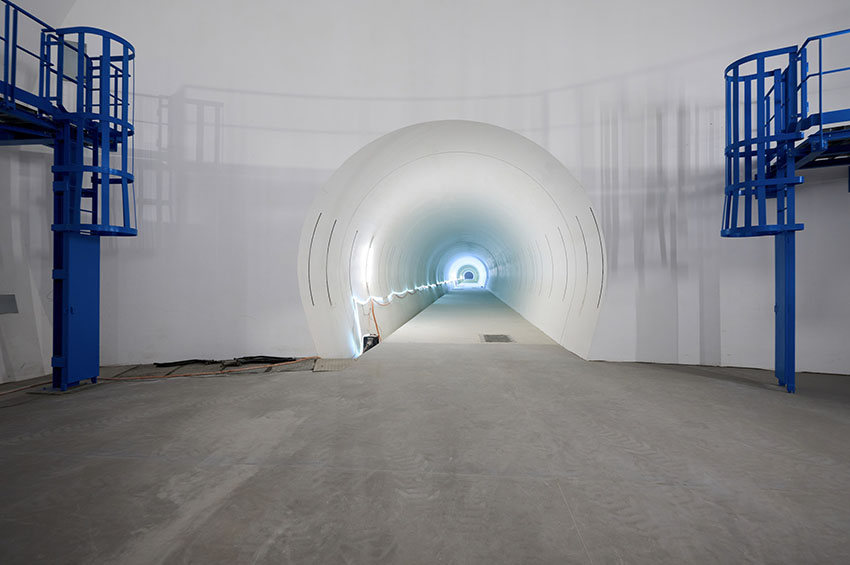Thanks to the upgrading of CERN’s particle accelerator, made possible by the HL-LHC project, scientists will increase the chances of making discoveries that revolutionize our existence in the future. A first important step towards this direction is the completion of the civil engineering works for the project.
The Large Hadron Collider (LHC), the world’s largest particle accelerator, is located within a 27-km circular tunnel at a depth of approximately 100 meters, with eight sites, called ‘Points’, positioned all along the circumference of the tunnel. The new civil works at Point 5, located in proximity to the existing ones of CMS in France, have been designed by the joint venture composed by Lombardi, Pini Group and Artelia, and include both underground and surface works.
The ceremony for the completion of the civil engineering works, together with those of Point 1 located in Switzerland, is scheduled for 20 January.
Once the new HL-LHC is up and running, two high-energy proton beams will be accelerated and collided in the system under the guidance of 1 600 main superconducting quadrupole and dipole magnets. The speed reached will be very close to that of light. The hope of the scientific world, thanks to the analysis of the collision data, is to be able to make new discoveries in nuclear physics and observe new and rare physical phenomena.

The experiments will also bring concrete benefits in technology, especially in the field of electrical engineering, such as vacuum and superconductor technologies. The latter are used in various fields and to the benefit of the community, for example, in imaging diagnostics and cancer treatment.
Some technical details
The underground works include a new shaft with a diameter of 12 m and a height of approximately 60 m, a cryogenic cavern with a cross-section of 270 m2 and a length of 60 m, a main gallery with a cross-section of 40 m2 and a length of 300 m, and four transverse galleries that allow connections to the existing LHC underground structures. The excavation of these works took place mainly in weak sedimentary rock (molasse).
The surface works include five new buildings dedicated to ventilation, electrical installations, cooling towers and cryogenic installations, as well as technical service ducts and new external road works and final landscaping.

The project had to solve several technical problems, including the limit of vibrations with very restrictive thresholds due to the fact that the existing LHC accelerator was under operation for a certain period of time during the excavation of the new shaft, as well as difficulties related to excavation and connection with the LHC’s existing tunnels and caverns.
PINI GROUP
Piazza Stazione 15
6537 Grono
Svizzera
Luca Cereghetti,
+41 78 715 26 28

